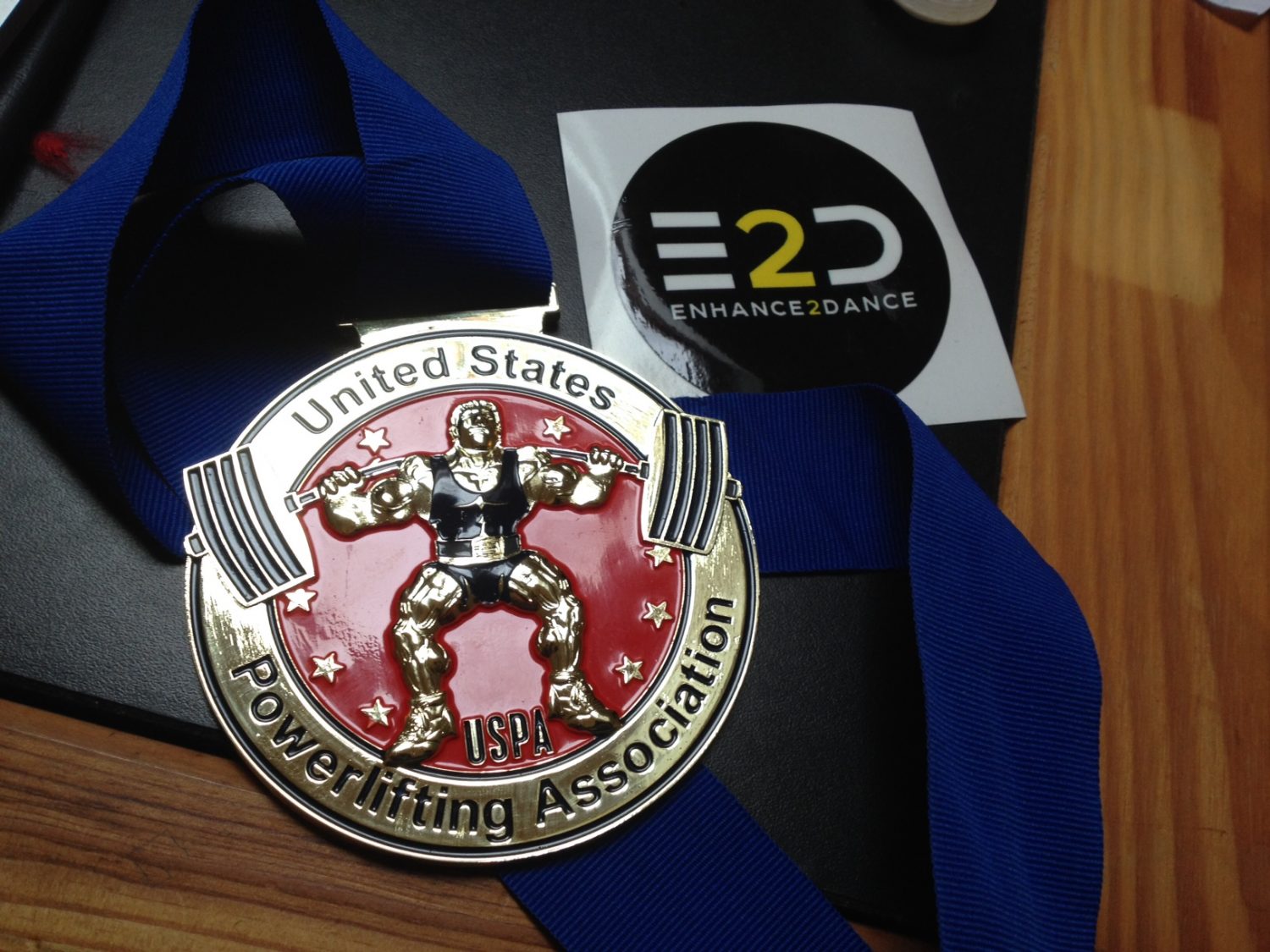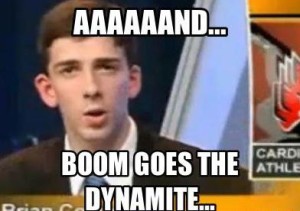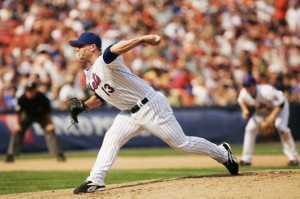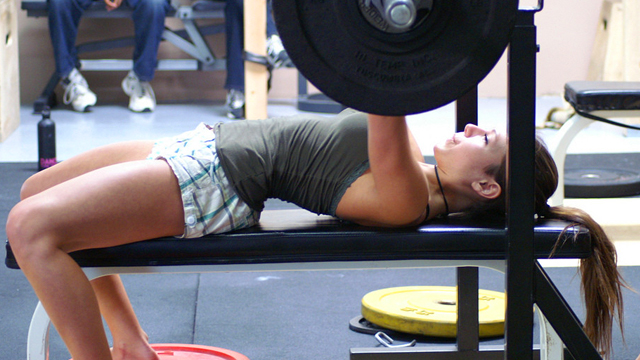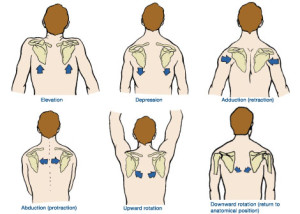My last powerlifting meet was in the USAPL in 2013, and this time around I knew things would be different.
The federation would be slightly different (USPA), my strength levels have improved tremendously, and my training blocks prior to the powerlifting meet were drastically different.
USPA Powerlifting Meet 3/28/15
My training recently comprised of a lot of eccentric, isometric, and jump training to improve my ability to produce force in multiple planes. While this is usually not the norms for a pure 100% powerlifting program, my movement, strength, and capacity for physiological power greatly improved due to this type of training.
How do I know? Well, after gaining an additional 10-12lbs, I went and tested my vertical jump on a Vertec Jump System. My previous personal record was 37.5 inches for a vertical jump, and after putting on some mass, I kept a 34 inch vertical jump in my bag of tricks. So only a ~10% decrease in power, while training for a maximal strength sport.
With the interesting power maintenance notes under your belt, let’s continue to the powerlifting meet.
USPA ran a great lifting meet, and it was a lot of fun to continue to clang and bang with some “brothers in iron.” The meet didn’t have that many people – around ~30 or so individuals, but still plenty of strong individuals to admire.
The night before, one of CSP’s current interns Eric and I went to the weigh in early. This is a game changer, because if you’ve attended any PL meet before with a 2 hour weigh in before competition, it gets dicey with eating dinner, sleeping, and not eating breakfast to make sure you’re not over the weight capacity for your weight class.
All I had to do was make sure I was 2 to 3lbs under weight (just to make sure our scales at home matched the ones at the location). I weighed in at 161lbs, and then we feasted at IHOP afterwards.

Anyway, onto the videos of my lifts!
Back Squat: 346lbs
Bench Press: 231.5lbs
Deadlift: 402.5lbs
…for a total of 980lbs.
I was also competing in the 148lb weight class.
My new PRs (2015) are:
Back Squat: 407.5lbs (61lb meet PR)
Bench Press: 233.5lbs (2lb meet PR)
Deadlift: 507.5lbs (105lb meet PR)
This was in the 165lb weight class, and an overall 168lb jump in numbers.
This also allowed me to win the 165lb Open Division.
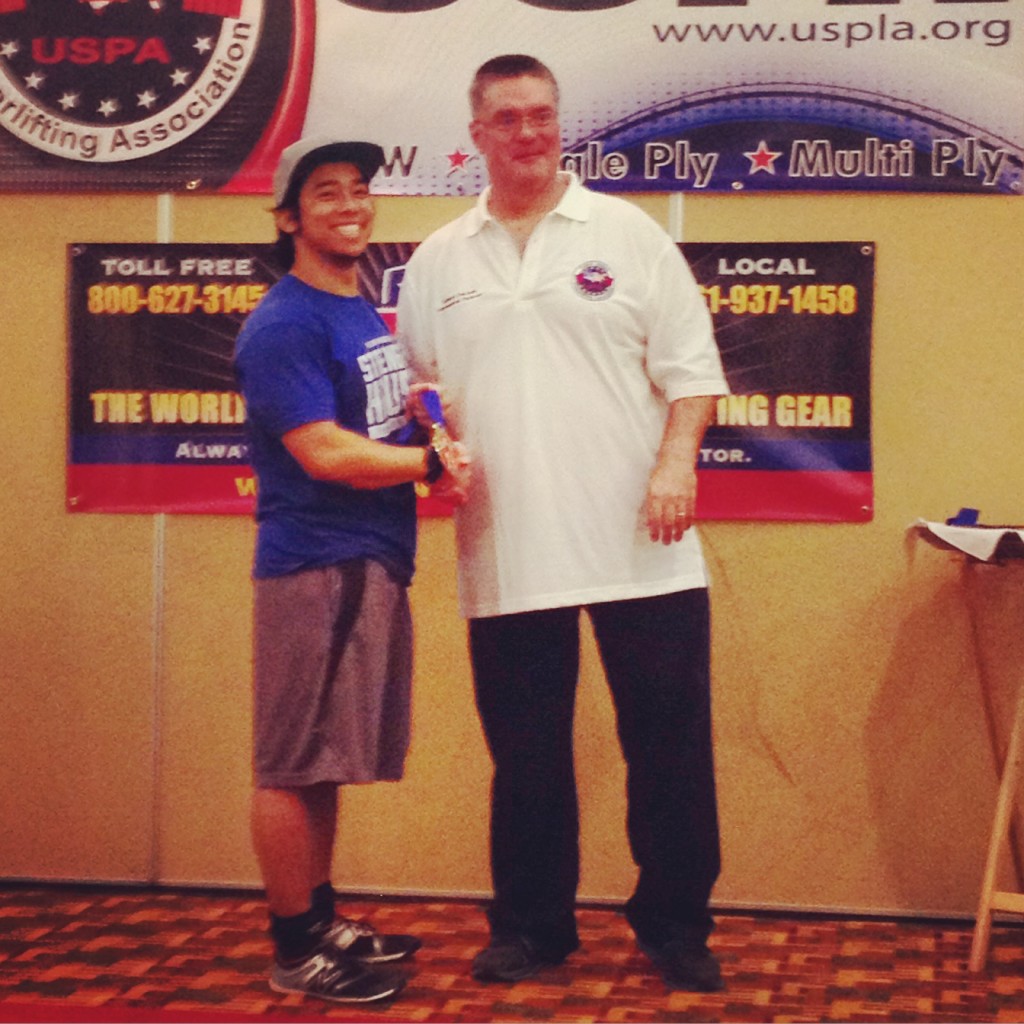
Reflecting on the Past Years’ Training
What a strange jump in strength levels. Keep in mind that my previous 1RM on my deadlift prior to moving to Massachusetts was 425lbs. Fast forward to the end of March, and I’m touching 515lbs on the deadlift.
I have a feeling my lack of ability to improve on my bench press may have something to do with my (lack of) shoulder stability – I might need to re-evaluate how I approach my training on that end. My movement quality has improved greatly, and I hit a 260lb bench press (sans the butt moving half an inch), and I’ve hit 275lbs with a pause twice for a personal best in the gym.
My deadlift has improved dramatically. I hope to write more to reflect the changes I’ve undertaken in this journey of lifting, as I feel deadlifting is the most natural of all of the “big 3”.
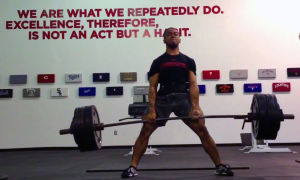
The squat is an interesting beast of a lift. I hope to improve greatly on this, as I’ve made the most “light bulb” moments prior to the powerlifting meet. The biggest light bulb moment I’ve had is what it means to feel a “bounce” out of the bottom/ole, or to feel the stretch shortening cycle change from the glutes to the quads out of the bottom to about midway up.
One thing that I wish someone could do is articulate on my specific body where I need to feel specific portions of the exercise. I feel the [sumo] deadlift is the easiest to feel a total body awareness, whereas all of the other movements are a bit lost on me because there is no ultimate place to feel tension.
What I mean by this is that the tension changes from position of the top to the bottom. In such a dynamic movement such as the squat, tension changes as you switch directions from descending to the hole to ascending out of it.
As you begin to flex at the hips and knees, your torso angle should primarily stay upright, otherwise you will begin to flex at the lumbar and thoracic vertebrae, which is not ideal.
Where I get lost is at the bottom of the hole, because you need to quite literally reverse the movement, and have the intent on pushing backwards while maintaining an upright torso. I feel like I lose tension quite easily from the glutes, and I immediately feel like I need to shift forward all the time (perhaps to utilize the quadriceps).
Despite this strange relationship I have with the squat, I have lifted 407.5 in a meet, and 425 in the gym multiple times.
I’m not quite sure I made the most sense with these last few statements, but I hope to look back at this post in a few months/years and speak with newfound confidence on the issue that is squats and bench press.
In any case, I’m of the belief that I couldn’t have done all of this without my gym training partners, Greg Robins (www.TheStrengthHouse.com) and Tony Bonvechio (www.BonvecStrength.com). We got weird sometimes with our #LateNightLifts last year, and I can’t wait to start the next training cycle.
As always,
Keep it funky.


